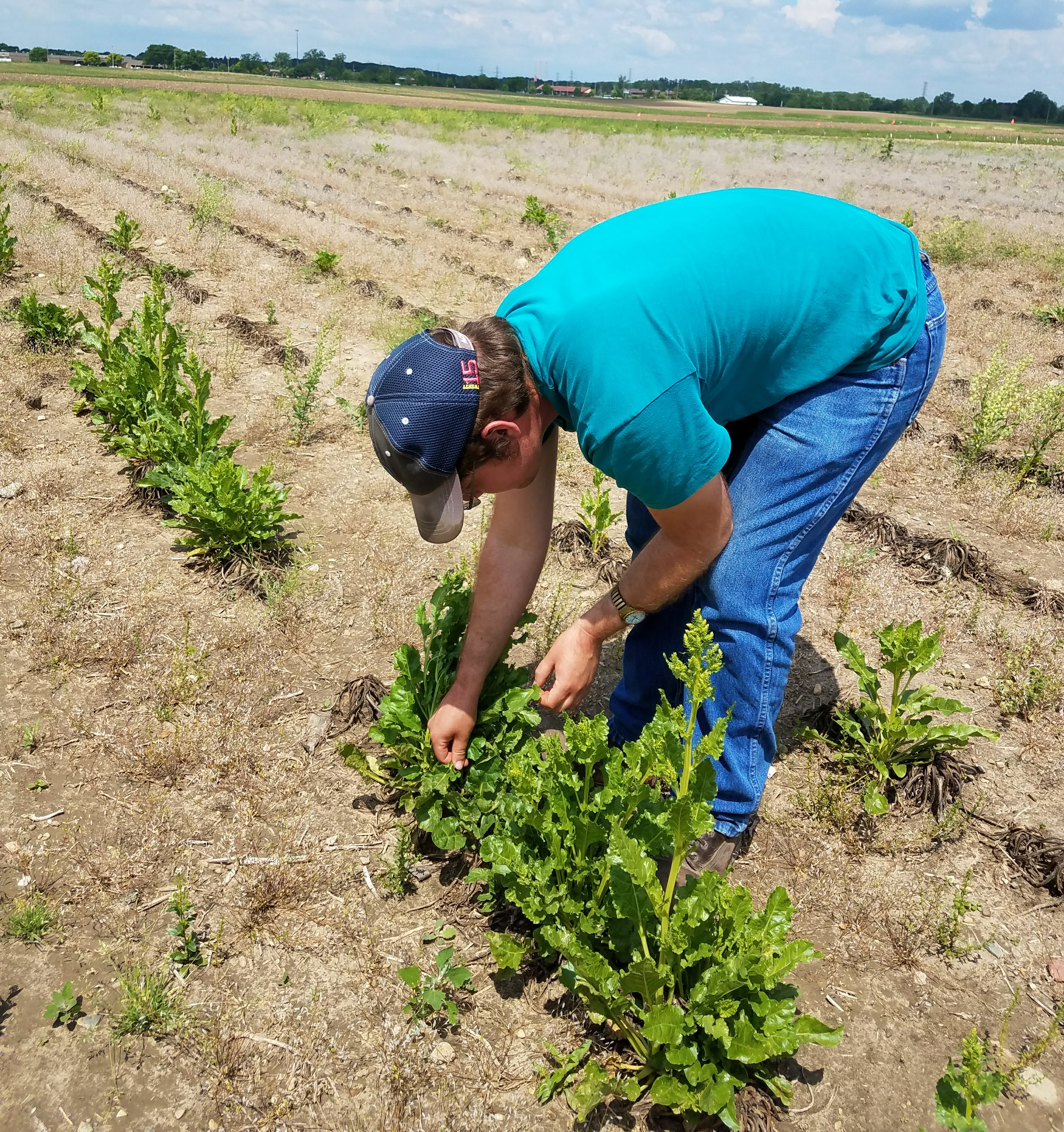Early Cercospora infection detected in overwintered sugarbeet fields in East Lansing
Scout for overwintered sugarbeets, which may serve as sources of early Cercospora inoculum for this year’s crop.

Cercospora leaf spots were detected June 1, 2018, on new leaves of overwintered sugarbeets located in a Michigan State University campus research field in East Lansing, Michigan. This finding was confirmed by MSU Diagnostic Services. Leaf spots appeared on newer leaf growth suggesting infection occurred within the last two weeks. Sporulation, the production of new spores, was also observed on infected leaves.
Last year, this field was used for a weed control experiment planted with Crystal G515 on May 17, 2017. No pesticides were applied to manage leaf spot diseases and these fields were only subject to natural infestations of Cercospora.
These observations support recent research findings of early inoculum presence in Michigan. Spores are often detected early in the season, prior to the established risk-thresholds. Infection also requires the presence of favorable environmental conditions and susceptible plant growth stage; however, these observations strongly suggest that inoculum is present early this season.
Please contact us through our Potato and Sugarbeet Disease website for more information.
Conclusion
Early leaf spot detection on overwintered sugarbeets suggests that volunteer plants could be sources of early inoculum for this year’s crops and Cercospora scouting programs should be initiated.




 Print
Print Email
Email




